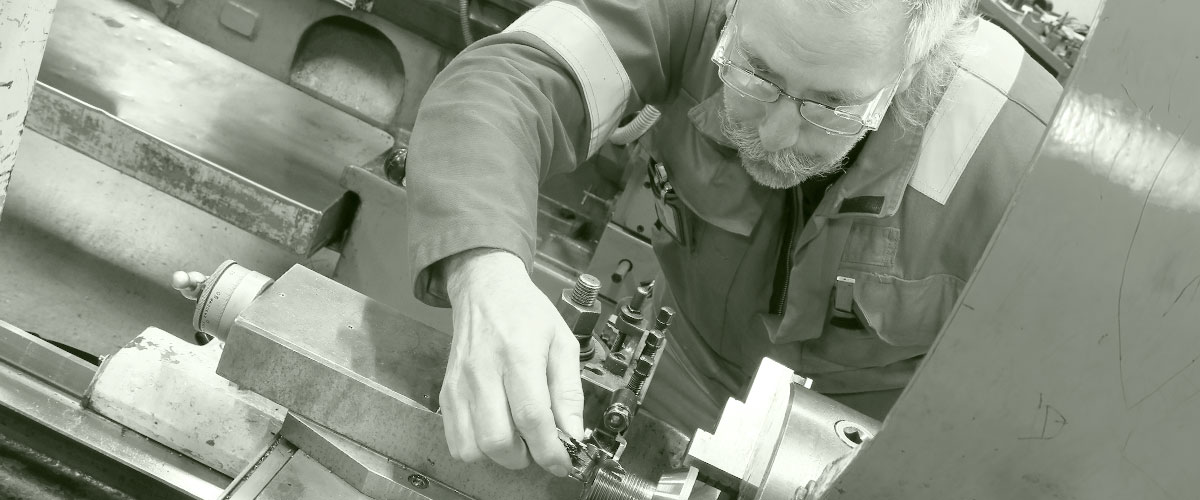
New Innovative Methods for Quality Capacity Life-Cycle Production Process Training of Inspectors
An Erasmus+ Strategic Partnership project within VET for training of inspector staff from mechanical industry.
Contractor: Quality Management Software
Contact person: Erik Engh - erik.qmsoft@gmail.com
Background
The European community relies on sustainable economic growth and the manufacturing industry is the backbone of this competitive economic growth. 9 % of all enterprises in the member states (Eurostat) were manufacturing companies in 2014. These 2.1 million fabrication enterprises employed 30 million people (Manufuture Vision 2030), generating EUR 1.710 billion of value. Out of these, approximately 1,3 million are welding personnel. This skills shortage within the welding sector is compounded by a rapidly aging welding workforce; with approximately 30% of the existing welding workforce aged over 45 years. This heavy proportion of older skilled trade workers, puts into focus that job positions related to welding will simply become impossible to fill. According to Belgian Welding Institute and VDAB in Belgium, the introduction of robotic welding applications has also created further problems: due to the complexity of the welding robots, even more specific competencies are needed to operate these robots.
Today, industry requirements focus on reducing consumption of energy, the carbon footprint, pollution and other emissions and health and safety issues. The current VET educational paths do not cover these items. However through the pilot courses these industry requirements will be highlighted and specified. Through these courses in this project, the successful candidates will receive a European International Welder Diploma. The courses, developed through a number of Competence Units, CUs, and its background focus on the objectives of the European Skills Agenda and implementing the EU Skills profile tools. Through welding simulators, industry personnel who have been away from the school system for a longer period, will get access to further training without needing to regain old and maybe forgotten knowledge.
The project will implement work-based training methodology in the pilot courses to familiarize the students with real industry needs and problems. Special emphasis will be carried out in order to use industry examples that merge theory and practice. This project will investigate, develop, test, evaluate, validate and organize a new service system solution where one national training body and 3 training providers in SL, HU and RO start implementing work-based learning in their VET systems.
The project will start on a journey leading to significant innovation, that until know have not successfully applied blended learning frameworks within training of mechanical industry personnel. This includes demonstrating the importance of applying vocational educational frameworks where the training providers and their teachers get a common understanding of how to combine blended learning service solutions and work based training methods. The training will be structured into a set of independent modules, named Competence Units (CUs). When a student has taken and successfully passed the first CU, they should get encouraged and motivated to take follow CUs to complete full courses that are structured, organized and delivered in the same manner. At the end they may take an international exam leading to an international diploma issued by the European Welding Federation.
Objectives
The project aims to develop, test, evaluate and validate educational processes and methods that support implementing welding simulators in a new work-based learning environment, focusing on establishing close industry and partnerships. It will target VET and skills update of industry personnel in SL, RO and HU in order to strengthen the industry recruiting process.
The project will implement methods and technology for applying welding simulators into VET. This will better predict, evaluate and reduce energy consumption, the carbon footprint and pollution related to the different welding processes, including evaluating the health hazards for the these processes and embrace these elements in order to meet industry and public requirements. A strong Industry partnership will be used for implementing practical digital skills. The project group will consists of participants with prior experience from developing pilot projects and personnel with broad industry experience and welding technology in particular
Results
- Developing a set of industry cases that are containing both success stories and failures to be used throughout the learning process.
- To develop set of work based test courses highlighting the use of welding simulators in order to reduce the dependency of prior theoretical education following the recommendation for up-skilling and re-skilling of personnel. The pilot courses will be developed in close cooperation with the industry requirements and following the guideline for International Fillet Welder and Inspector.
- Extract the experience from using welding simulators and their impact during the work based pilot courses with the students. To match the industry requirements with the output results and the use of welding simulators as a tool for understanding the theoretical requirements in the education.
- Develop a methodology for an improved system "greening" production process knowledge provided to welders, allowing the system to apply "what-if " scenarios addressing energy consumption, calculation of the carbon footprint and pollution from various welding processes applicable for a job.
- Test and validate a teacher training program based on the previous feedback and the results from the specifications and implement a standardized digital framework.
Innovation
The project results will enable an innovative VET educational development strategy that will ultimately contribute to:
- Embed welding simulator tools that allow students, especially those with limited theoretical background, to enroll into courses which are driven by industry demand in the welding sector.
- Promote a work based mindset that can be tailored to meet local or regional industry needs.
- Create an industrial specification and algorithms for verifying energy consumption and the carbon footprint results for the different welding processes. This innovative facility is not available for VET educators at the current stage.
- Create a database of industrial examples demonstrating correct welding of different processes, and a set of examples showing the results of cases where the welding has not been correctly performed and its consequences for personnel and environment.
- Implement a "what-if" process methodology whereby the fabrication process are evaluated for possible solutions, instead of one single production process parameter.
- Provide flexibility among educators in applying various pedagogical strategies that include combining onsite training with state of the art digital tools like e-learning, response systems and online video support by Zoom. Utilizing an online welding simulation tool to highlight different industrial problems and make the methods adaptable to diverse themes and curriculums. This includes promoting an education environment where creativity and risk-taking are encouraged and learning by making mistakes are valued as a valuable learning opportunity.
- Promote the application of an active learning approach where students learning is directly linked to producing a product based up on specifications from a customer.
- It will challenge educators offering VET training to the fabrication sector, to embed into their own educational resources the development of key production competences for the trainees in robotic, automatic welding methods, and MIG/MAG and so forth
Synergies
The new VET methods will better support flexible training frameworks mixing distance teaching and on-site learning, thus having the potential of reducing training costs by:
- Supporting multiple teaching and learning styles, thus offering a solution to heterogeneous staff groups that include early school leavers and staff with other learning disabilities.
- Apply desktop-based video to enhance collaboration and cooperation between different industry locations.
- Using them "on the fly" if for instance teachers and staff want to discuss an upcoming challenge or a problem with staff from other companies, including those owned by their competitors.
- Providing teachers and institutions with real manufacturing experiences obtained by groups of students.
